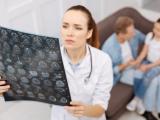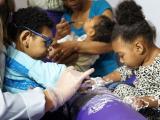Based on several reports that Zika virus is spreading rapidly in Puerto Rico, federal officials yesterday recommended that the territory consider aerial spraying as part of a program to curb the mosquito populations that spread the disease.
Puerto Rico has reported spikes in Zika infections, and an update today from the US Centers for Disease Control and Prevention (CDC) shows that 506 more cases have been reported from affected territories since the previous week, most of them in Puerto Rico.
In other Zika developments, European researchers who sifted through travel-illness data found very few mosquito-borne illnesses in those who visited Brazil in the months that parallel the upcoming Olympic and Paralympic Games.
Resistant mosquitoes limit spray formula
CDC Director Tom Frieden, MD, MPH, said several independent sources indicate that based on current trends, thousands of pregnant women in Puerto Rico will be infected with Zika virus.
"The continental United States has been using aerial spraying for decades to reduce mosquito populations, and we urge the people of Puerto Rico to consider using the same proven and safe tactic," he said in a statement.
The CDC and the Environmental Protection Agency (EPA) are recommending spraying, which EPA administrator Gina McCarthy said is in line with integrated mosquito control recommendations for other parts of the United States. "We strongly encourage the people of Puerto Rico to consider aerial spraying as this approach is safe for people and a proven way of controlling the spread of mosquitoes that transmit diseases from Zika to dengue to chikungunya," she said.
The two agencies said they would help Puerto Rico implement an integrated mosquito control plan, with the CDC providing initial funding and technical support and the EPA providing technical and regulatory guidance. Plans include $500,000 in dedicated funding to safely get rid of discarded tires and other standing water sources and support for communities to use adulticides and larvacides.
For aerial spraying, Puerto Rico won't be able to use pyrethroid formulations, because studies earlier this year showed mosquitoes in the territory were resistant, the CDC said in its statement. The alternative product being considered is Naled, which has been used on the US mainland as recently as last year, including in Miami and Tampa, Fla. The same product has been used following hurricanes in Florida and was used in Puerto Rico in 1987.
The CDC said on Jul 1 that Puerto Rico received $5 million of $25 million from the agency to help states, cities, and territories battle the Zika virus.
CDC totals rise as more pregnant women infected
The CDC's updated Zika numbers today don't reflect any new birth defects, keeping the totals at 12 in US states and 1 in Puerto Rico. However, more Zika infections were confirmed in pregnant women, 33 from the states and 29 from the territories. Overall totals are 320 and 279, respectively. In the territories, most of the Zika infections in pregnant women have been in Puerto Rico.
In affected territories where Zika is spreading locally, the 506 new cases lift the total to 2,526, the CDC said. Meanwhile, US states reported 198 more travel-linked cases and one more sexually transmitted case, which could be a case reported last week in South Carolina.
Study: Few mosquito-linked illnesses in Brazil's winter
A review of travel-related illnesses in Europeans returning from Brazil over the past 3 years found very few mosquito-borne disease cases in those arriving back in their home countries in the months of August and September, the months when the Summer Olympics and Paralympic Games will be held. Researchers from 22 EuroTravNet sites reported their findings today in Eurosurveillance.
They analyzed travel-related illnesses reported from June 2013 to May 2016. Over 3 consecutive years, only three dengue cases were reported during Brazil's cooler months, with no chikungunya cases reported.
Authors noted that the more common conditions were dermatologic, gastrointestinal, febrile systemic, and respiratory illness. Of the 508 sick Europeans included in the study, 68% were tourists, and the average stay was 22 days.
The authors said previous studies have shown a drop in dengue illnesses in Rio de Janeiro in August and September. "Given that Zika virus is transmitted via the same Aedes aegypti vector, we consider that the risk of acquiring ZVI [Zika virus infection] during the 2016 Olympic and Paralympic Games in Brazil will be low," they wrote.
In other Olympics-related Zika developments, Cerus Corporation and its distributor in Brazil announced a donation of its blood system pathogen reduction kits to HEMORIO, the public hospital responsible for transfusion medicine and hematology care in Brazil's Rio de Janeiro state. In a statement yesterday, the company said the facility is the designated emergency preparedness blood center for the Summer Olympic Games and that the goal of the donation is to protect emergency platelet and transfusion procedures during the games.
WHO update, virus diversity findings
- In its weekly Zika update today, the World Health Organization (WHO) said a mission to Guinea-Bissau will be conducted to help determine whether the strain circulating there is related to the one causing outbreaks in the Americas. Jamaica is the latest country to report Guillain-Barre syndrome in a confirmed Zika case, putting the number of countries reporting similar cases at 15. The WHO said it and its partners have established definitions of a Zika outbreak, endemic transmission, and transmission interruption to better characterize disease activity and assist with public health recommendations for residents and travelers.
- A phylogenetic analysis of Zika virus by Chinese researchers reveals that the Asian strain linked to the large outbreaks in the Americas has evolved into two major lineages, which they termed an Oceanian lineage, reflecting Chinese cases imported from Fiji and Samoa, and a Latin American lineage. They reported their findings yesterday in a letter to Emerging Microbes & Infections. The team found diversity in the genomes of Zika viruses from Brazil that has increased since 2013 with geographic expansion, but with no strain showing higher fitness than others.
See also:
Jul 6 CDC press release
Jul 7 CDC update on Zika cases in the United States
Jul 7 CDC update on Zika infections in pregnant women
Jul 7 CDC update on Zika-related pregnancy outcomes
Jul 7 Eurosurveill report
Jul 6 Cerus Corp press release




















